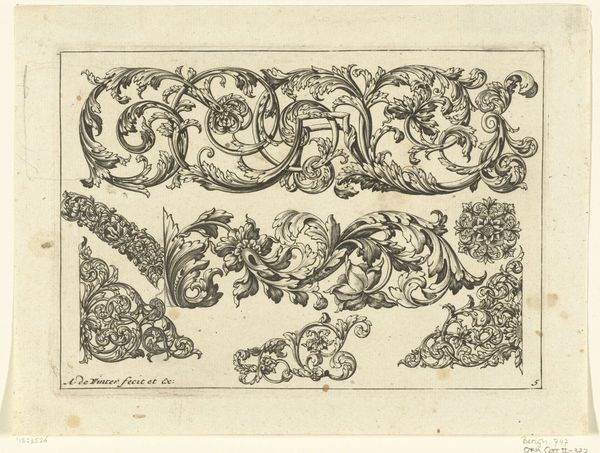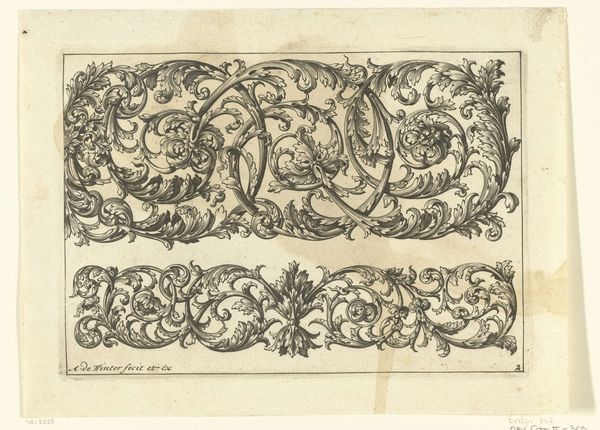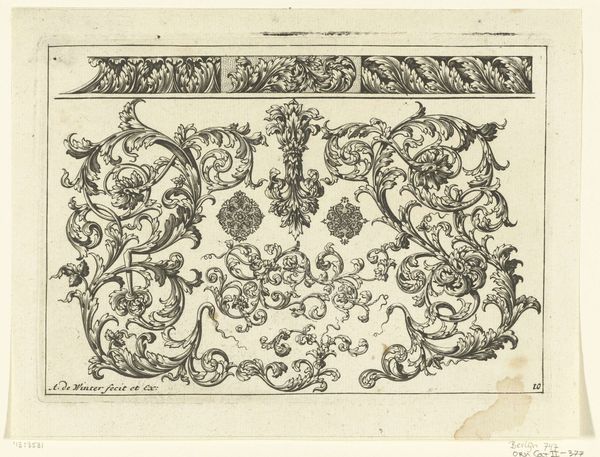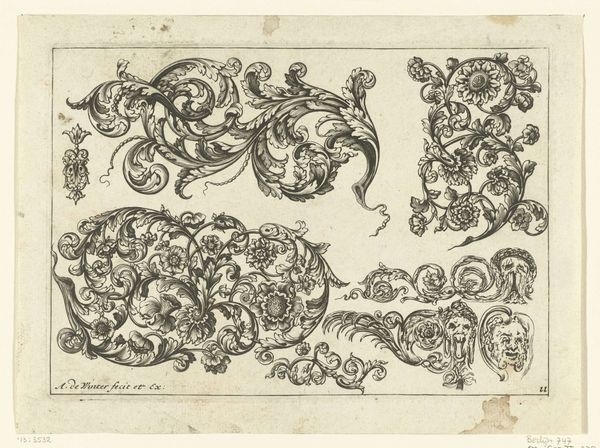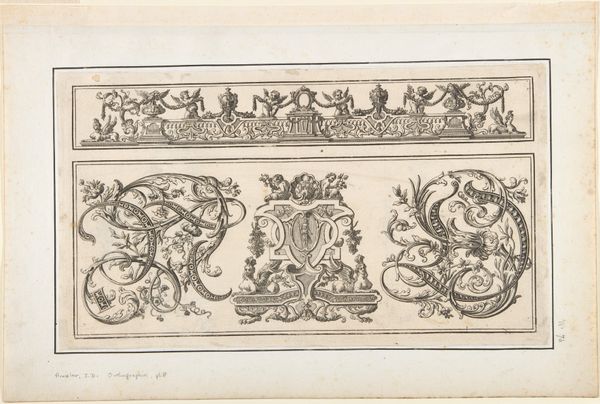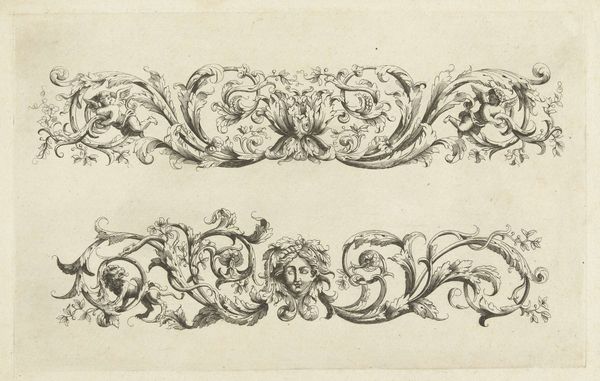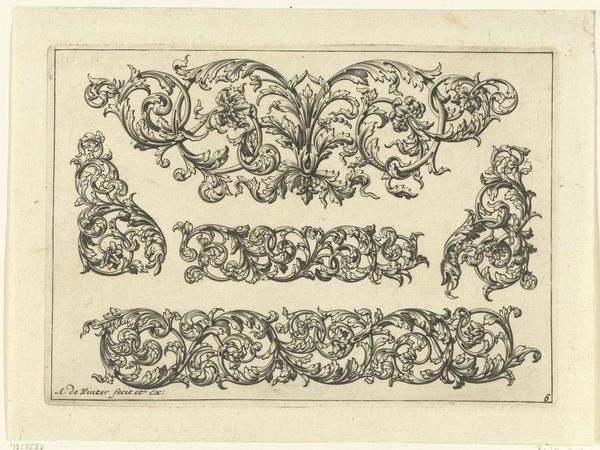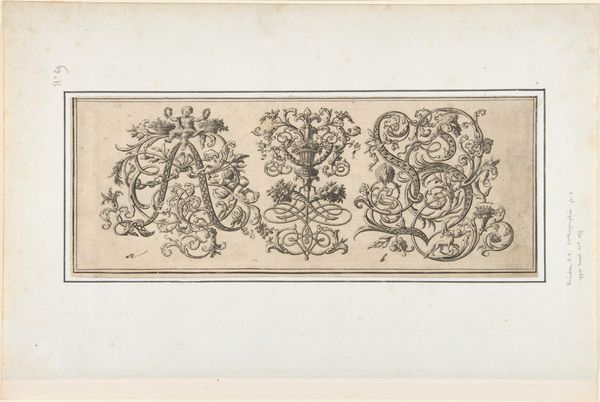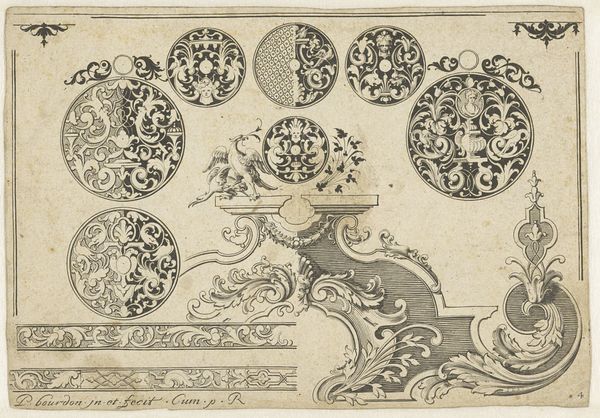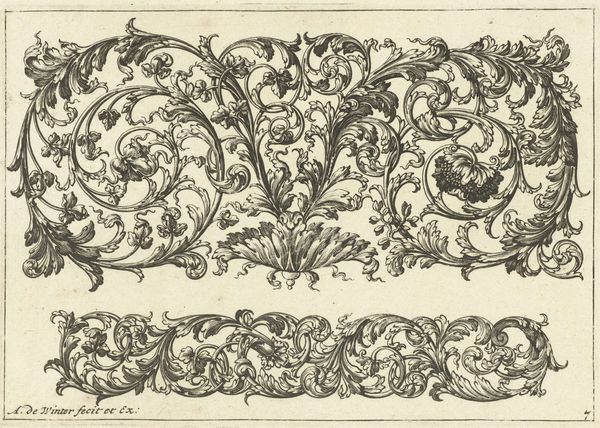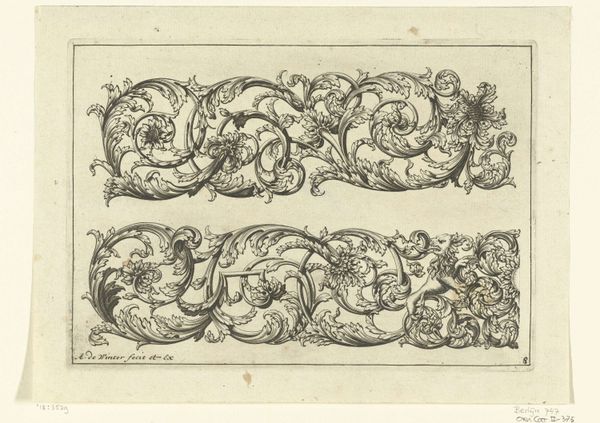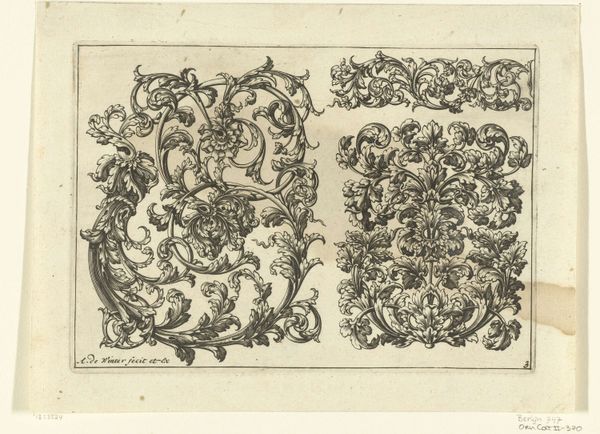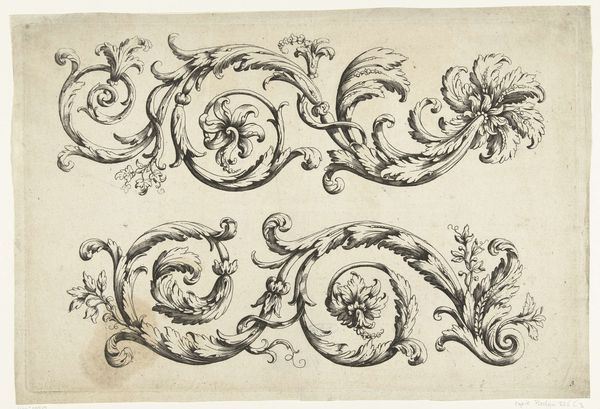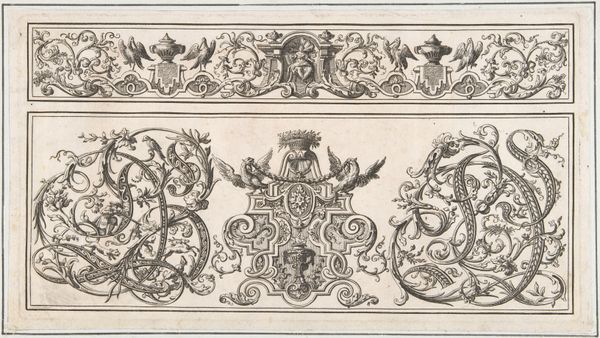
ornament, print, engraving
#
ornament
#
baroque
#
pen drawing
#
dutch-golden-age
# print
#
form
#
line
#
engraving
Dimensions: height 136 mm, width 190 mm
Copyright: Rijks Museum: Open Domain
Curator: Looking at this detailed print, "Dertien Motieven" by Anthonie de Winter, made around 1690 to 1700, I’m struck by the density of ornamentation. It feels like a baroque cornucopia of design ideas crammed onto a single page. Editor: It feels strangely modern to me, in its almost scientific display of patterns, a study of motifs. And despite the intricacy, the limited color palette, black ink on white, makes it remarkably clear. What strikes you about the history of such a work? Curator: Well, consider the social function of prints during the Dutch Golden Age. These weren't just aesthetic objects; they served as accessible resources for artisans and craftsmen. Ornament prints provided a visual vocabulary that could be adapted for furniture, architecture, and even everyday objects. It was a visual language democratized through printmaking. Editor: And what a language it is! Leaf scrolls, grotesque masks... The symbolic roots run deep, don't they? I see echoes of classical acanthus leaves, a sense of power, rebirth and also that grimacing face, that looks to scare evil. Are we seeing a fusion of high art and popular belief here? Curator: Absolutely. This particular print bridges that gap beautifully. De Winter wasn’t necessarily creating “high art,” but providing models deeply rooted in classical tradition, which were then absorbed into the broader cultural landscape. Think of it as the Pinterest of the late 17th century! Disseminating visual culture in unprecedented ways. Editor: And look how consistently certain visual elements appear throughout. Those swirling acanthus leaves do act like connectors, reminding the observer that these forms are all part of one visual system. Perhaps the devilish figure in the middle row reminds people of a deeper, primordial connection. What I find so fascinating is the enduring power of such symbols, passed down through generations, retaining a whisper of their original emotional resonance. Curator: It also points to a shifting social dynamic. As art moves outside the confines of elite patronage and into the hands of a burgeoning middle class, it adapts, transforms, becomes… accessible. These ornaments weren’t just decorative flourishes; they were social signifiers. The baroque ornament was an articulation of status and taste. Editor: So, while this print showcases specific ornamental designs of its era, it offers a deeper view. It demonstrates the potent symbolic and social narratives quietly interwoven into our visual surroundings. Curator: Exactly. "Dertien Motieven" gives us a tangible snapshot into the machinery of early modern visual culture, where art shapes society as much as society shapes art.
Comments
No comments
Be the first to comment and join the conversation on the ultimate creative platform.
